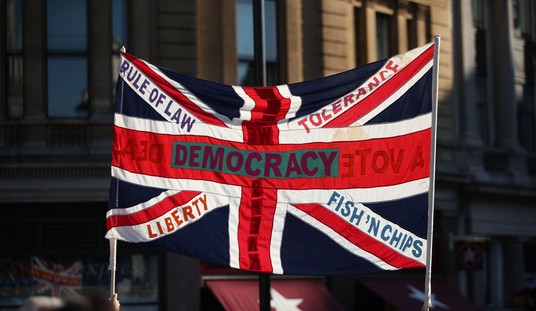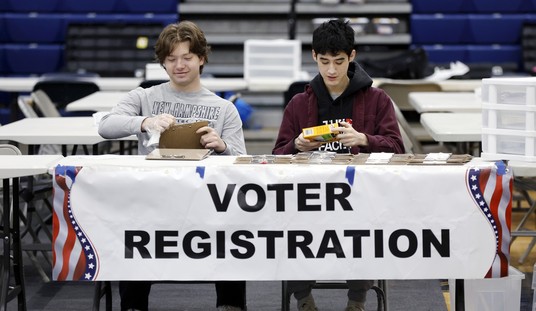While I claim no expertise, I do have a general understanding of how the oil market works, which is more than can be said for ThinkProgress “investigative journalist” Lee Fang. A series of articles (notably here and here) has convinced the so-called Progressive community that Fang has blown the lid off a Koch Brothers conspiracy to control oil markets via speculation.
For Mr. Fang, the Koch Brothers’ “Contango Strategy” is the smoking gun. A contango market allows the owner of oil storage to score low-risk profits of several dollars per barrel. The Kochs capitalized on such a situation back in late 2008/early 2009. But Fang repeatedly fails to explain how commodities futures trading drives the market price of the commodity.
To better understand how the market works, let’s take a closer look at this strange term, contango.
Contango refers to the market condition wherein the price of a forward or futures contract is trading above the present spot price.
Futures markets exist for a multitude of industrial and food commodities. A user of acommodity may wish to hedge his risk to fluctuations in the price of a commodity by buying a contract today for future delivery at some future time. Southwest Airlines successfully employed such a strategy a few years back in hedging their cost of jet fuel.
On June 1 of this year, here is what the “strip” of future prices for West Texas Intermediate Crude Oil looked like:
At the time, the “spot” price (the price for immediate delivery) was very nearly $100.00 per barrel. The first “future” contract available was for July 2011 delivery. Going six months or a year out, the curve slopes up (that’s the contango). The buyer of such a contract is willing to pay a $2 to $3 premium over today’s spot price to insure price and delivery. In other words, he’s concerned that the price may exceed $103 when he needs the oil six months from now, so he thinks it’s a good deal to lock in $103 per barrel as insurance against that event.
The current contango situation reflects the market’s nervousness about any and all factors which may impact the future direction of oil prices. The market is rightfully nervous about unrest in the Middle East. Since oil trading is denominated in U.S. dollars, weakness in the dollar translates to oil price risk. (The opposite of contango is “backwardation“, perhaps my favorite word in the English language.)
Here’s the key point: A futures contract is insurance against a future (price) event. The mere existence of a contract does not influence the actual future price, any more than a person makes his own death more or less likely by purchasing a $1,000,000 term life policy.
As proof of that point, note that WTI Crude Oil closed trading on Friday, June 17, at $93.01 per barrel (spot price). The July 2011 future price was $93.00; the premiums for contracts six- and twelve months out are $2 and $3.80, respectively. The premiums are essentially the same as they were two weeks ago, while the spot price fell $7. The futures curve has adjusted to today’s spot price, not vice-versa.
It ain’t rocket surgery, but Lee Fang and his friends on the Left don’t get it. It’s an article of faith with them that oil price moves are dictated by greedy speculators, not supply and demand.
A contango market presents a profit opportunity to the owners of storage like the Kochs. Oil in inventory today can be bought at the spot price ($93) and sold at December’s price ($95), netting a $2,000 profit on each 1,000 barrel contract. If the spot price declines to, say, $85 between now and December, the seller can fulfill his obligation with cheaper barrels (but the value of his inventory has declined). If the price goes up to $105, he can fulfill the contract out of his inventory with physical delivery. He still made $2 per barrel on the transaction, and his remaining inventory is worth more.
Back in late 2008, according to Fang’s account, the Kochs bought several tankers full of oil (up to 1,000,000 barrels each) on blue-light special — $35 per barrel — and sold them into the futures market. They profited handsomely. Fang thinks their trading forced prices up. Nothing is further from the truth.
Rather than causing prices spikes, commodities trading and speculation actually work to dampen price spikes. While this concept may seem counter-intuitive, it’s easy to demonstrate by looking at prices of a commodity for which futures trading is forbidden by federal law: onions. Professor M. J. Perry explains the details in his blog; interesting reading for those so inclined.
Absent futures trading, 100% of the onion crop is traded at spot. Bumper crop? Prices crater; we can’t eat all those onions and it costs money to store them. When a crop fails or they’re out of season, the price goes through the roof. A spot-only market is wildly volatile, like driving a car with no suspension; futures contracts provide shock absorbers for market volatility.
Commodities trading is often done on paper, and settled in cash without physical delivery of the product. This is the type of speculation that Fang supposes moves the market, but he fails to explain the mechanism. A futures contract is essentially a bet between two parties. One wins if the price rises, the other if the price falls. How this arrangement moves the cash price is lost on me.
Aside from a basic lack of understanding of market mechanics, Fang’s articles also fail in documentation and logic. Some of his links are broken, and the ones that work often do not support Fang’s assertions. For example, this passage …
Excessive energy speculation today is at its highest levels ever, and even Goldman Sachs now admits that at least $27 of the price of crude oil is a result from reckless speculation rather than market fundamentals of supply and demand.
… links to a prior ThinkProgress article by Brad Johnson, which says:
The world’s largest commodity trader, Goldman Sachs told its clients that it believed speculators like itself had artificially driven the price of oil at least $20 higher than supply and demand dictate. They even admitted that their work to drive up prices has harmed the American economic recovery…
How $20 became $27 is anybody’s guess. But numerical inconsistency is the least of Fang’s problems.
This “admission” by Goldman is Fang’s best evidence that futures trading caused the market price of oil to rise.
But if you follow the link to the Wall Street Journal blog cited as a reference, you see no such admission. Maybe Goldman did tell its clients, “Honey, We Wrecked the Economy”, but for all the links, Fang provides no evidence. Not surprising, as an admission of market manipulation and acceptance of blame for a poor national economy would be, um, highly unusual coming from a public company like Goldman Sachs.
Even if Goldman did make the admission Fang claims, they are, in his words, “the world’s largest commodity trader”! Goldman’s forecast of future weakness in oil prices could be a self-fulfilling prophecy, and a highly profitable one at that. A statement by Trader Goldman somehow gains credibility with Fang if it can be used to smear Trader Koch.
(A side note: On May 31, Goldman reversed itself and once more became bullish on oil. As we saw above, the price has retreated $7 per barrel since that time.)
An investigative journalist’s job should be to research an issue, gather and present the facts and help his reader connect the dots. In the Case of the Manipulating Koch Brothers, Lee Fang has accomplished none of that. Instead, he followed this formula:
- Take the names of a few bogeymen (e.g., Koch, Enron, Phil Gramm)
- Toss them in the air
- Say the magic word three times (“Contango! Contango! Contango!”)
- Hope that the dots will somehow connect themselves.
Isolating and demonizing the Koch Brothers is a strategy straight out of Alinsky’s Rules for Radicals. Rule 13 says: Pick the target, freeze it, personalize it, and polarize it. Nice try, Mr. Fang, but you forgot Rule #2: Never go outside the experience of your people.
Postscript: Fang conveniently ignores another story of speculation and market manipulation. One need look no farther than ThinkProgress benefactor George Soros, who also funds the Center for American Progress, where Fang is employed as a “researcher”. According to a recent article in Human Events:
A large part of Soros’ multibillion-dollar fortune has come from manipulating currencies. During the 1997 Asian financial crisis, Malaysian Prime Minister Mahathir bin Mohamad accused him of bringing down the nation’s currency through his trading activities, and in Thailand he was called an “economic war criminal.” Known as “The Man who Broke the Bank of England,” Soros initiated a British financial crisis by dumping 10 billion sterling, forcing the devaluation of the currency and gaining a billion-dollar profit.
Cross-posted at stevemaley.com.















Join the conversation as a VIP Member